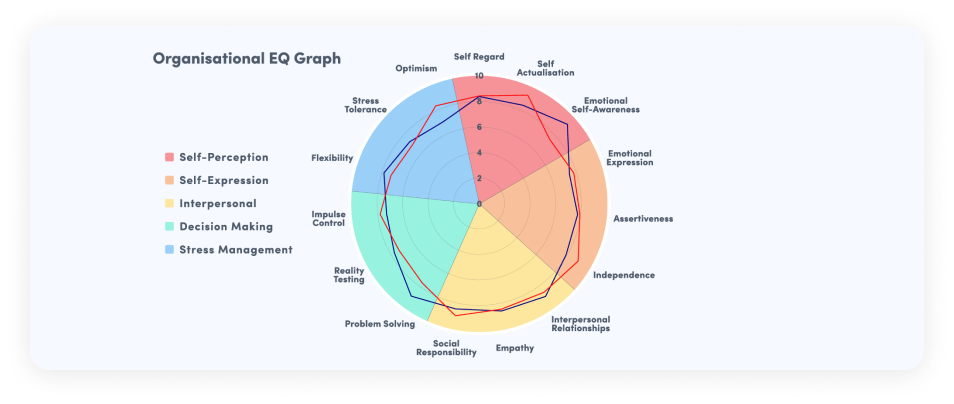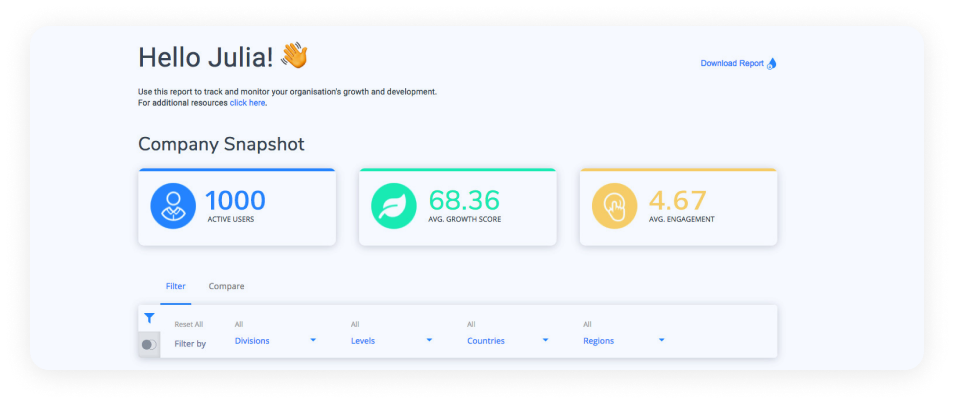It’s no secret that at Mygrow we believe your biggest and most valuable resource is your people.
A crucial part of your success is thus inspiring, motivating, and calling your people to more. Put another way, if you want your people to perform at their best and if they’re not, then you want to know why. One such way that this has been done historically is through the use of Key Performance Indicators, KPIs.
The current KPI landscape
KPIs play an important role in helping to track the successes and failures of your business. Providing visibility, KPIs can give employees benchmarks to aim for and clearly communicate what is expected of them. This is simpler for areas that can be easily quantified and measured, such as sales targets, lead generation, employee turnover, and revenue.
However, things become increasingly complex when it comes to effective and meaningful employee behaviour or people-related metrics. For example, productivity, enthusiasm, and the personal development of employees are significantly more difficult to quantify and measure. You can try tracking hours worked, overtime done and tasks completed, but this data is insufficient in telling you the real story of how engaged your employees actually are.
This brings us to a key question: should workplace behaviour form part of your KPIs?
We would argue yes.
It is not only what you do at work, but how you do it that counts. Right?
Emotional Intelligence at work
It is easy to see the impact of EQ at work by looking at it when it’s lacking. Imagine a workplace with ineffective leaders who shame your mistakes and cause conflict. Where there is high incivility and stress, as well as poor conflict management. It is unlikely that employees are performing well.
Emotional Intelligence is the “set of skills that make people great at managing themselves and interacting with others”. Essentially, your EQ describes the way you do your work and impacts the following:
- Leadership Effectiveness
- Interpersonal Dynamics
- Workplace Incivility
- Stress Management
- Conflict Management
In recent years EQ has emerged as the most significant differentiator of individual performance in the workplace 1 and is the set of skills that most powerfully impacts organisational performance and employee well-being 2.
Our argument is that EQ significantly influences productivity, employee experience, and culture, and as a result, should surely form part of your KPIs.
Meaningful metrics
There are a variety of attempts at approaching behaviour related KPI’s. Reporting, surveys, 360-degree assessments, bi-annual interviews, time tracking… you name it! These predominantly focus on employee productivity.
The downside of these approaches is that they measure the ‘low road’ and focus only on what you do, rather than how you do it. At the very least we expect employees to work their contractual hours with consistency and regularity. But what about those companies that want to go above and beyond just ticking the boxes? Who want to take the ‘high road’? What do meaningful behavioural metrics look like?
Previously it hasn’t been viable to effectively make EQ a KPI because it wasn’t possible to bring together the relevant components of “developing, measuring and tracking” EQ. However, due to technology this combination now exists, making EQ a reasonable, rightful, valid, and reliable KPI. Mygrow’s solution to this is what we term the “Growth Score”, a unified metric that accounts for an individual’s performance on various factors relating to their personal EQ development and growth on Mygrow. Each user’s Growth Score is the output of a composite dynamic algorithm. The score adjusts on a daily basis and is a proxy for the user’s engagement in his/her personal development journey. It can be used as a benchmark to compare development between individuals and groups.
Why is the Growth Score so powerful?
The Growth Score provides a measurement and tracking mechanism for current and future EQ development. It is an indicator of overall EQ growth since it takes into account often overlooked, yet invaluable data central to competency development.
Dynamic beats static measurement
The Growth Score is significantly different from typical psychometric measures of EQ competencies that simply provide a static snapshot of current or past competence. These have a limited capacity for projecting future growth in various competencies. The Growth Score provides real-time, evolving data to measure and show current and projected EQ potential.
Benchmarking is fluid
The Growth Score allows for dynamic and consistent benchmarking between individuals and their respective departmental groups or teams. Because the Growth Score is dynamic and adjusts daily, the benchmarks are not static snapshots taken at infrequent intervals. Instead, the scores allow for real-time benchmarking comparing individuals, teams, departments, and organisations. Furthermore, growth can be compared at different time points to measure changes in EQ over time.
Gamification drives engagement
The Mygrow platform has a leaderboard that allows users to compete against others in their cohort. This provides an exciting gamification experience, where the leaders are those who invest in behaviours that improve EQ competencies. The Growth Score algorithm ensures each aspect of the gamification relates directly to EQ development, so individuals can track and see their own progress. This empowers individuals to take ownership of their own progression and growth.

A more accurate proxy for change
The Growth Score, as a measure of growth and potential, is significantly different from traditional training and development measures, which use attendance or knowledge acquisition as a proxy for growth. Attendance and increases in knowledge (technical or skills-based) typically have not been shown to correlate with behaviour change. The Growth Score measures the factors empirically shown to enhance the development of EQ competencies.
Current, potential and improvement
The Growth Score factors improvement as one of its core criteria. This means that if a Mygrow user’s technique quality and engagement levels increase over time, his/her Growth Score will also improve. Therefore, the Growth Score not only factors in current and potential growth but also measures user improvement over time.
RO(D)I at a glance
The Growth Score can assist managers and HR teams by using real-time data to measure the current and potential growth of Mygrow users. This data provides insights into the benefits of Mygrow, as shown by actual numerical growth during the Mygrow journey, using the Growth Score. When users are engaged with the platform, their Growth Scores should improve. Since high Growth Scores lead to improved organisational constructs, such as leadership, engagement, decision-making, and relationships as well as coping with stress and pressure (to name a few), the Growth Score can be used as a proxy for return on (development) investment.

Succession planning with purpose
The Growth Score can be used for talent identification and succession planning* (combined with other organisational outputs, such as performance). Demonstrating the extent to which employees are developing their EQ competencies provides a window into important organisational constructs such as leadership, etc. Employees committed to their own growth through the Mygrow platform indicate a commitment to development like no other once-off assessment or training programme.
The Growth Score can be used as a gateway for employees to enter into various other (costly) leadership programmes, as they display an already proven track record of dedication. Without wasting time and money deciding who may be best suited to go on various development courses (and perhaps over-relying on performance on the job), the Growth Score can be used to provide composite, dynamic data.
In summary, the significance of EQ and its impact on productivity and profitability justifies its importance as a KPI. And thankfully, due to technology EQ (and subsequently) workplace behaviour can be tracked, measured and used as a reasonable, rightful, valid, and reliable KPI.
Reference list
- Goleman, D. (1995). Emotional intelligence: Why it can matter more than IQ. New York, Bantam.
- Goleman. D. (1998). Working with emotional intelligence. New York, Bantam.



Hi I’m curious to understand whether and how you have considered neurodivergence, especially for those who are not only introverts but have other conditions which might mean that they struggle say with direct eye contact, or the many other ‘cues’ those without certain neurological, physiological, psychological or mental health conditions rely on but which can be extremely uncomfortable, even difficult or impossible for others? Have you taken into account research which shows that those with high social anxiety or high sensory sensitivity and/or autistic spectrum (and other) disorders are often very attuned to the emotional subtleties of social environments and… Read more »
Thank you so much for this – what an interesting question. We are going to write a blog in response, so stay tuned!